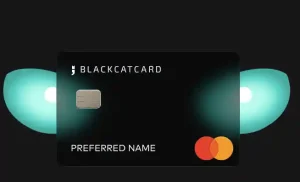In the world of investing, risk is an ever-present companion. But just as you might carry an umbrella on a cloudy day, investors have tools to protect their portfolios. One such tool is the covered call, a strategy that, when used correctly, can help shield your investments from market downturns. In this blog, we’ll explore how to use covered calls. Start your trading journey by visiting Immediate Mator, a reliable trading platform online.
Understanding Covered Calls: The Basics
Let’s start with the basics. A covered call involves selling a call option on a stock you already own. For those not steeped in trading lingo, a call option gives the buyer the right—but not the obligation—to purchase a stock at a set price within a specific timeframe. By selling this option, you agree to sell your shares at the agreed-upon price if the buyer exercises the option.
Now, why would you do this? The answer lies in the premium. When you sell a call option, you receive a payment upfront, known as the premium. This premium is yours to keep, no matter what happens. If the stock price stays below the strike price (the price at which the option can be exercised), the option expires worthless, and you keep both your shares and the premium. It’s a way to earn a little extra income from stocks you already own.
How Covered Calls Hedge Your Bets?
So, how does this strategy help with hedging? Think of the premium as a cushion. When markets get choppy, this extra income can help soften the blow. If your stock takes a dip, the premium reduces your overall loss. While it won’t save you from a significant downturn, it offers some protection, like a safety net.
Let’s say you own shares of a company that’s been performing well, but you’re concerned about potential volatility. By selling a covered call, you collect a premium that can offset some of the losses if the stock price falls. The idea is to balance the risk with a bit of income, creating a more stable investment experience.
Weighing the Pros and Cons
As with any strategy, covered calls come with their pros and cons. On the plus side, they provide a way to generate additional income from your existing stock holdings. This can be particularly helpful in sideways markets, where prices aren’t moving much in either direction. The premium collected can help boost your overall returns or provide a buffer during market slumps.
However, there’s a flip side. When you sell a covered call, you’re capping your potential gains. If the stock soars above the strike price, you might have to sell your shares at a lower price than they’re worth on the open market. This is the trade-off—protection in exchange for limiting your upside. It’s a bit like putting a speed limiter on a race car; you won’t crash, but you won’t hit top speed either.
Another consideration is the time and effort involved. While covered calls are less complex than some other options strategies, they still require attention. You’ll need to keep an eye on your stocks and decide when to sell new calls or let existing ones expire. It’s not a set-it-and-forget-it approach, but for those willing to put in the work, the rewards can be worth it.
Crafting Your Covered Call Strategy
If you’re considering adding covered calls to your investment toolkit, it’s essential to have a clear plan. First, choose the right stocks. Ideally, you want to use this strategy with stable, dividend-paying stocks that you’re comfortable holding long-term. The goal isn’t to get rich quickly but to protect what you have while earning a little extra income.
Next, pick a strike price that aligns with your outlook. If you’re willing to part with your shares at a modest profit, set the strike price just above the current stock price. If you’d rather hold onto your shares, choose a higher strike price, but be aware that the premium you receive will be smaller.
Timing is also key. Covered calls work best in markets that are flat or gently rising. If you expect a big move, up or down, this might not be the right strategy. Remember, the goal is to generate steady returns and reduce risk, not to chase big gains.
Conclusion
Covered calls are a powerful tool for investors looking to manage risk while squeezing a bit more income from their portfolios. However, they’re not without their trade-offs. By limiting your upside, you’re giving up some potential gains in exchange for a bit of protection. For many, this is a worthwhile compromise, especially in uncertain markets.





